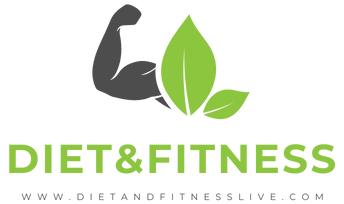
The Ketosis Diet: A Comprehensive Guide to Achieving Optimal Health and Fitness
As the world becomes more health-conscious, more and more people are looking for ways to achieve optimal health and fitness. One of the most popular diets in recent years is the ketosis diet, which has been gaining popularity due to its ability to help people lose weight and improve their overall health. In this article, we will discuss everything you need to know about the ketosis diet, including its benefits, side effects, and how to follow it properly.
- What is the Ketosis Diet?
- Benefits of the Ketosis Diet
- Side Effects of the Ketosis Diet
- How to Follow the Ketosis Diet
- Tips for Success on the Ketosis Diet
- Conclusion
What is the Ketosis Diet?
The ketosis diet, also known as the keto diet, is a high-fat, low-carbohydrate diet that aims to put your body in a state of ketosis. Ketosis is a metabolic state in which your body burns fat for fuel instead of carbohydrates. This is achieved by drastically reducing your carbohydrate intake and increasing your fat intake. By doing so, your body enters a state of ketosis, where it produces ketones, which are used for energy instead of glucose.
Benefits of the Ketosis Diet
The ketosis diet has many benefits, including weight loss, improved mental clarity, increased energy, and reduced inflammation. When you reduce your carbohydrate intake, your body starts burning fat for fuel, which leads to weight loss. Additionally, ketones are known to have neuroprotective properties, which can improve mental clarity and focus. The ketosis diet can also increase your energy levels, as your body is using fat for fuel instead of carbohydrates. Finally, the ketosis diet has been shown to reduce inflammation, which is a major contributor to many chronic diseases.
Side Effects of the Ketosis Diet
While the ketosis diet has many benefits, it also has some potential side effects. Some people may experience the “keto flu,” which is a set of symptoms that can include fatigue, headaches, and nausea. This is a result of your body adapting to the new diet and entering a state of ketosis. Additionally, the high fat intake can lead to digestive issues, such as constipation and diarrhea. It is important to consult with a healthcare professional before starting the ketosis diet to ensure that it is safe for you.
How to Follow the Ketosis Diet
To follow the ketosis diet, you need to drastically reduce your carbohydrate intake and increase your fat intake. A typical ketogenic diet consists of 70-75% fat, 20-25% protein, and 5-10% carbohydrates. This means that you will need to avoid foods that are high in carbohydrates, such as bread, pasta, and sugar. Instead, you will need to focus on foods that are high in fat, such as meat, fish, eggs, and nuts. It is also important to stay hydrated and consume enough electrolytes, as the ketosis diet can lead to dehydration and electrolyte imbalances.
Tips for Success on the Ketosis Diet
To be successful on the ketosis diet, it is important to plan ahead and be prepared. This means meal planning and prepping, as well as keeping keto-friendly snacks on hand. It is also important to track your macronutrient intake, as it can be easy to consume too many carbohydrates or protein without realizing it. Finally, it is important to be patient and give your body time to adapt to the new diet. It may take a few weeks for your body to enter a state of ketosis and for you to start seeing results.
Conclusion
The ketosis diet is a popular diet that has many benefits, including weight loss, improved mental clarity, increased energy, and reduced inflammation. However, it is important to consult with a healthcare professional before starting the diet, as it can have potential side effects. To follow the ketosis diet, you need to drastically reduce your carbohydrate intake and increase your fat intake. By planning ahead, tracking your macronutrient intake, and being patient, you can be successful on the ketosis diet and achieve optimal health and fitness.






